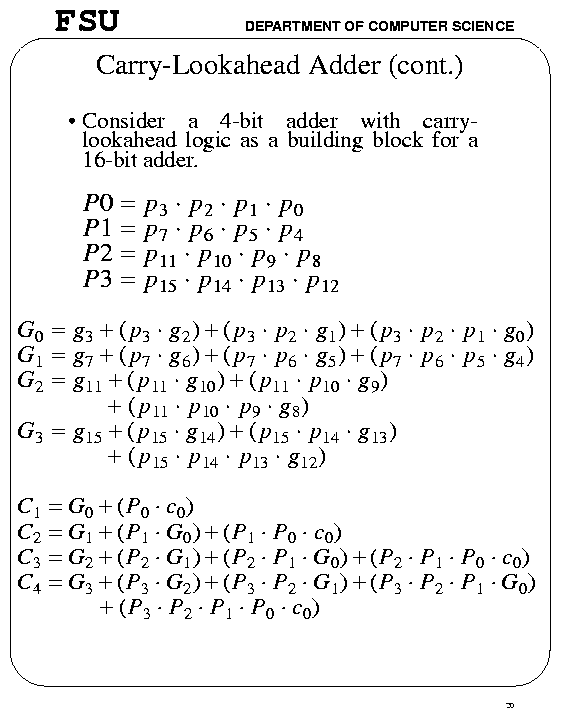

- #8 bit adder truth table with carry out how to#
- #8 bit adder truth table with carry out full#
- #8 bit adder truth table with carry out code#
#8 bit adder truth table with carry out code#
The required VHDL code, shown next, requires the same number of lines of code as the 4-bit adder. For example, to make an 8-bit adder, we change the vectors to have a width of eight bits. It is easy to expand the adder width by changing the range of the FOR GENERATE statement. Similarly, the output, c4, is assigned the value of the element c(4). The input carry, c0, defined in the entity declaration, is assigned to the vector element c(0). Since we have an input carry, an output carry and three internal carries, we must use a 5-bit signal ( BIT_VECTOR (4 downto 0)) if we are to include all carry bits in indexed form.
#8 bit adder truth table with carry out full#
In this case i goes from 1 to 4, so the statement instantiates four instances of the full adder. The GENERATE statement will create hardware that corresponds to the range of the index variable, i. Define a signal for internal carry bits SIGNAL c : BIT_VECTOR (4 downto 0) Īdder: full_add PORT MAP (a(i),b(i),c(i-1),c(i),sum(i)) END GENERATE Component declaration COMPONENT full_addĪ, b, c_in : IN BIT c_out, sum : OUT BIT)

#8 bit adder truth table with carry out how to#
The VHDL code that follows shows how to use the statement to create a 4-bit adder.

The four component instantiation statements shown previously can be written in a more general form:Īdder(i): full_add PORT MAP (a(i), b(i), c(i-1), c(i), sum(i)) Ī statement that can be written in this indexed form can be implemented using a GENERATE statement A VHDL construct that is used to create repetitive por. If we only wish to use some of the component ports or use them in a different order than the order in which theywere originally defined, we must use the previous form of port map (i.e., a a(1), etc.). In this case, we can simply list the connect ports in the port map in the correct order, as follows:Īdder1: full_add PORT MAP (a(1),b(1),c0, c(1),sum(1)) adder2: full_add PORT MAP (a(2),b(2),c(1),c(2),sum(2)) adder3: full_add PORT MAP (a(3),b(3),c(2),c(3),sum(3)) adder4: full_add PORT MAP (a(4),b(4),c(3),c4, sum(4)) We can write the component instantiation statements more efficiently if we decide to use all ports of the component in the order they are defined. The ripple carry from adder1 to adder2 is achieved by mapping the port c_in of adder2 to c(1), which is also mapped to the port c_out of adder1. The connect ports for the instance adder1 are a(1), b(1), c0, c(1), and sum(1). For example, the component ports of the full adder component are a, b, c in, c_out, and sum. In the port map, component ports are the names of the ports used in the component file and connect ports are the names of the ports, variables, or signals used in the higher-level design entity. We will not use this feature in our present examples. For example, a parameter name can be given a value that specifies the number of component output bits. In the generic map, a generalized parameter name can be mapped to a specific value when the component is instantiated. PORT MAP (_component_port _connect_port, _component_port _connect_port) GENERIC MAP (_parameter_name _parameter_value, _parameter_name _parameter_value) The component instantiation statement is of the following form:

In effect, we are redefining the component entity in the top-level file of the design hierarchy. Note that the form of the component declaration statement is almost the same as that of the component’s entity declaration. The component declaration statement defines the ports of the component with the same names as in the full_add.vhd. Digital Arithmetic and Arithmetic Circuits.


 0 kommentar(er)
0 kommentar(er)
